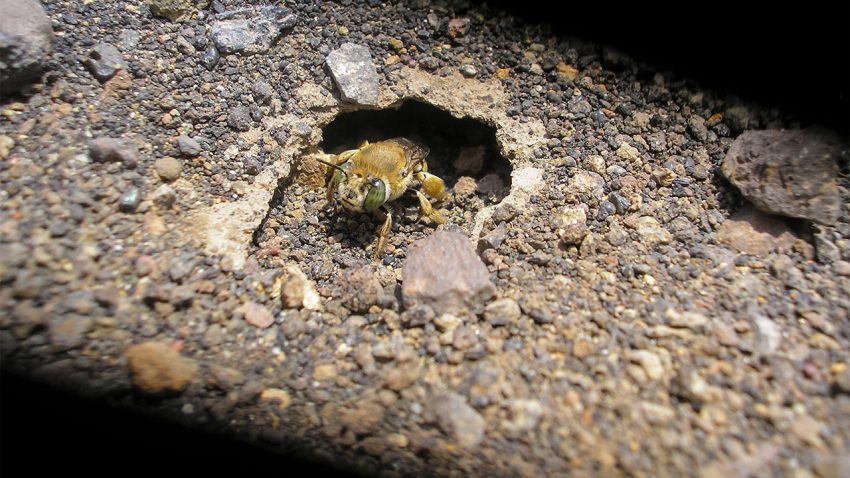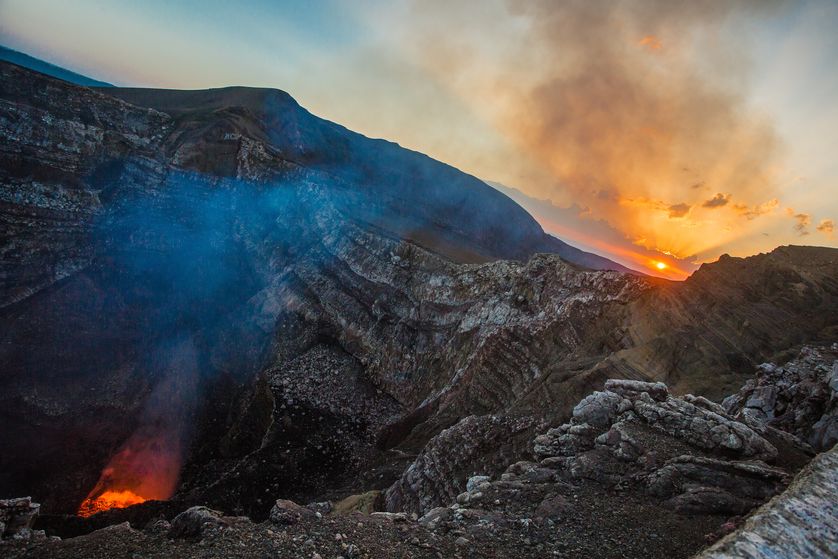
Like most bees, the ground nesting Anthophora squammulosa, that are native to parts of North and Central America, are a solitary species. The females lay their eggs in little underground nests and then head out to search for nectar to feed their developing larvae. This process usually takes place in environments with plenty of flora, to ensure a reliable supply of food.
So you can only imagine British entomologist Hilary Erenler’s surprise when she came across some Anthophora squammulosa bees buzzing around in the ashes of the active Masaya volcano, 20 km south of Nicaragua’s capital Managua. The bees appeared to be living almost exclusively in a narrow patch of ash close to Masaya’s Santiago crater. Dubbed “kill zone” by researchers, the area is known for its extreme temperatures which can get as high as 42°C (107.6°F), as well as frequent acid rain caused by the sulfur dioxide fumes from the volcano. The intrigued researcher teamed up with other experts to see how the bees were managing to live in this inhospitable environment, where very little survives.

The first task was to investigate how many bees called this volcano home. This was not easy given that the scientists had to scour the ash-ridden area multiple times. Three years and five visits later, they were able to conclude that the side of the volcano harbored between 1,000 to 2,000 members of the species.
Then came the question — what do these bees eat? Prior research has shown that Anthophora squammulosa feed off a wide variety of plants. However, the insects living on the Masaya volcano’s edge do not have the same luxury. When the scientists analyzed the pollen from the female bees’ bodies, they discovered that 99 percent of all pollen collected came from the Melanthera nivea — a hardy wildflower that can withstand the harsh conditions.

The researchers, who published their findings in the July edition of the Pan-Pacific Entomologist, speculate that the bees set up camp in this hostile environment to keep safe from predators. It could also be because very few plants can grow on the volcano's side. Hence, the underground bee nests aren’t broken up by their fast-growing roots, as often happens in “normal” environments. But safe as they may appear, Erenler notes that this group of Anthophora squammulosa bees could be in even more danger. A massive volcano eruption or the death of the single plant they depend on for food would eradicate the entire population.
While this does show that bees are more resilient than previously believed, researchers warn that we should not stop our conservation efforts to save the precious insects that are dying at unprecedented rates thanks to the loss of habitat and reckless human behavior.
Resources: sciencemag.org, mmn.com